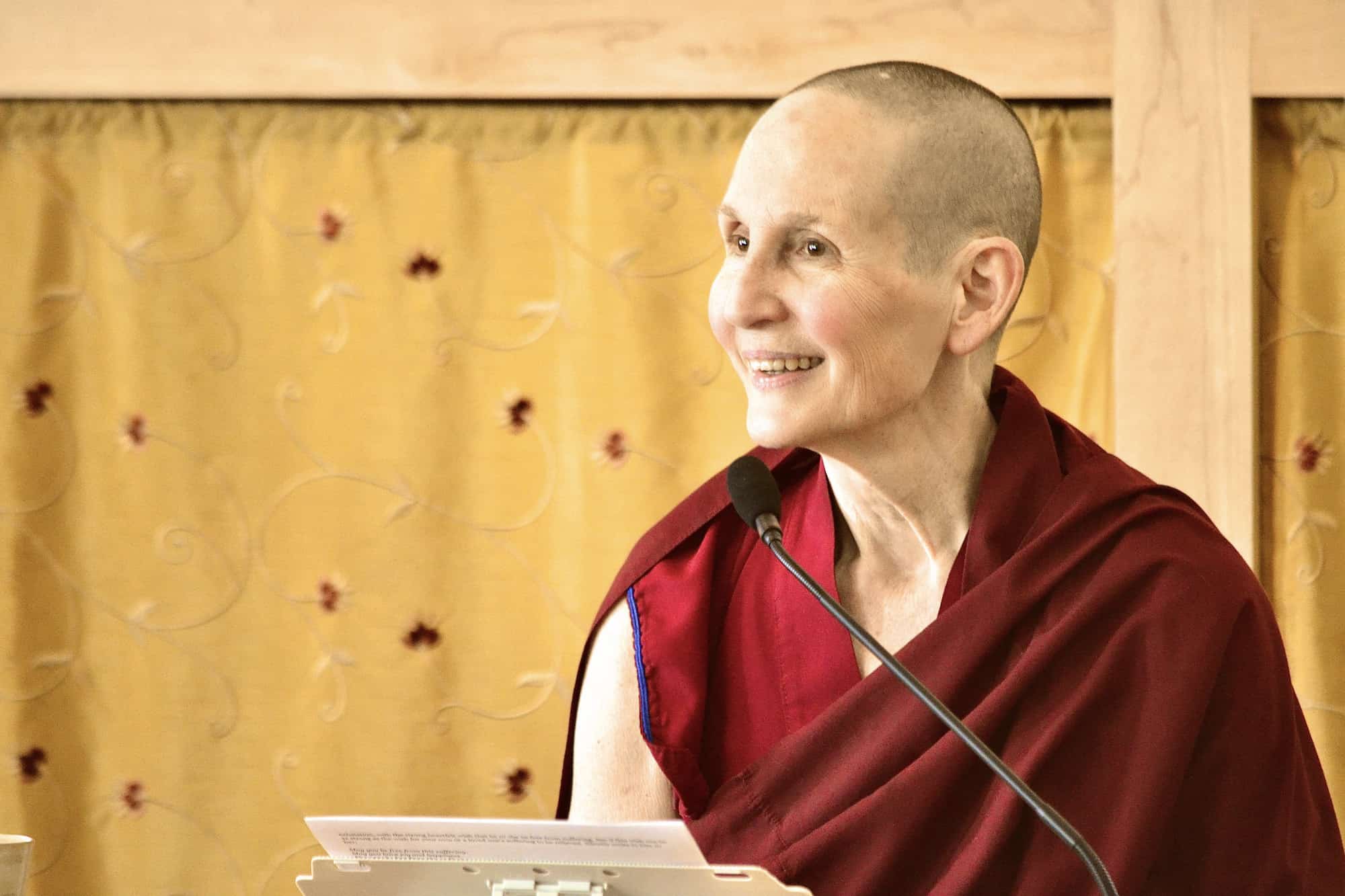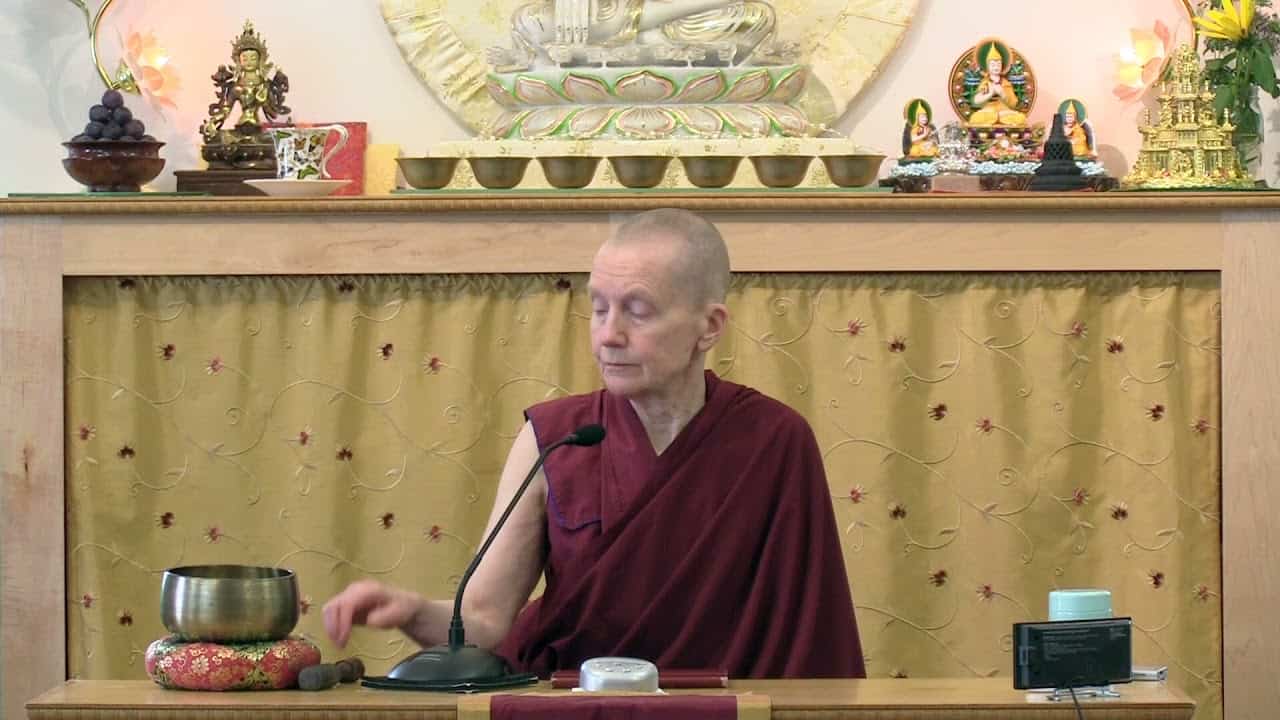Having-ceased
36 Samsara, Nirvana, and Buddha Nature
Part of an ongoing series of teachings (retreat and Friday) based on the book Samsara, Nirvana, and Buddha Nature, the third volume in The Library of Wisdom and Compassion series by His Holiness the Dalai Lama and Venerable Thubten Chodron.
- Explanation of having-ceased according to different tenet systems
- Abstract composite and affirming negation
- Differences between karmic seed and having-ceased
- Example of prostration to describe karmic seed and having-ceased
- Karmic seeds and having-ceased during meditative equipoise on emptiness
- Dreams, memories, mental objects
- Comparing latencies to notions of original sin and the unconscious
Samsara, Nirvana, and Buddha Nature 36: Having-Ceased (download)
Contemplation points
- Explain what “having-ceased” means. Make an example of an action’s “having-ceased.”
- Why is a “having-ceased” labeled an impermanent phenomena according to the Prasangika tenet system? Why is this an important distinction from the lower schools?
- Explain in your own words the difference between the Christian idea of original sin and the Buddha’s teaching on how afflictions and karma are carried from one life to the next.
- Do any of the psychological models of the unconscious resonate with you and why? Why can’t we just stick with the psychological approach and attain the mind of the Buddha?
Venerable Thubten Chodron
Venerable Chodron emphasizes the practical application of Buddha’s teachings in our daily lives and is especially skilled at explaining them in ways easily understood and practiced by Westerners. She is well known for her warm, humorous, and lucid teachings. She was ordained as a Buddhist nun in 1977 by Kyabje Ling Rinpoche in Dharamsala, India, and in 1986 she received bhikshuni (full) ordination in Taiwan. Read her full bio.


